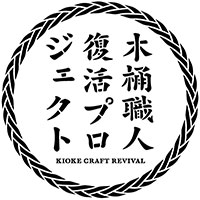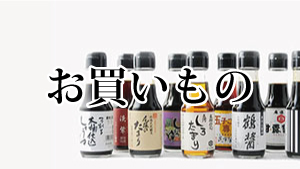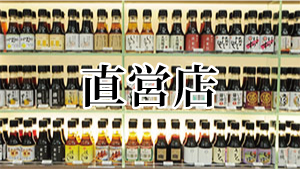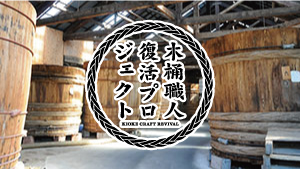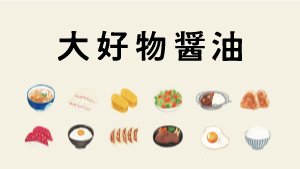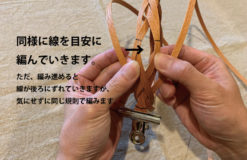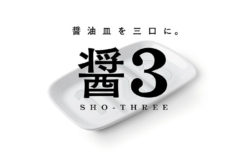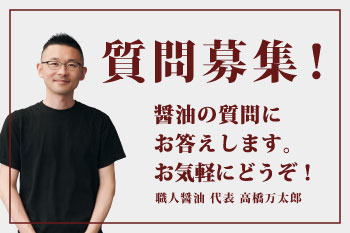木桶仕込みの蔵
ヤマロク醤油│Yamaroku
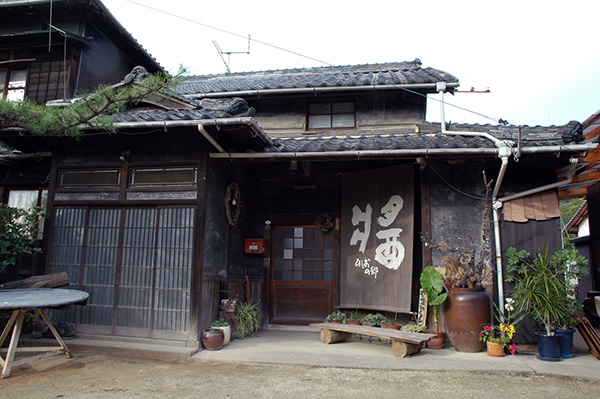
百年先を見据えて桶づくりも手掛ける
「孫の代に桶仕込みの醤油を残すのが夢」と話す山本康夫さん。百年後を見据えるなら自分たちで桶をつくれるようになろうと地元の大工さんと共に桶から手掛けています。一度ここを訪れた方はヤマロクの大ファンになって帰路につくはずです。
Focused on making kioke for the next 100 years
“My dream is to pass down the legacy of kioke for my grandchildren’s generation,” says Yasuo Yamamoto, owner of Yamaroku Soy Sauce Brewery. Preparing for the next 100 years’ batch of soy sauce, Yamamoto and a local carpenter worked together to construct kioke (a large wooden barrel made with Japanese cedar), a challenge that has not been done before in contemporary times. Only after one visit, you will soon become a big fan of Yamaroku and its beliefs.
どうしても行きたい醤油蔵
予約なしで見学OK。見学用に用意されたものではなく、そのままの現場を丁寧な説明とともに見ることができます。昔ながらのシンプルで時間をかける醤油づくりと、別次元とも思えるくらいに薄暗く静まり返った蔵が出迎えてくれます。
そして、醤油を味わうと誰かに自慢したくなってしまう・・・その話を聞いた人が小豆島を訪れる。この繰り返しでいつも見学者で賑わっています。ただ、そこに安住することなく常に挑戦し続けているところがヤマロク醤油らしさだと思います・・・
A must-see brewery!
Without needing to make a reservation, you can tour the brewery with detailed explanations of traditionally-brewed soy sauce. The brewery itself is quite simple and old-fashioned, however it gives any visitor a deep impression. In the midst of a dim and tranquil stillness of the whole atmosphere, it almost seems you’ve entered another time period.
After the tour, you have the opportunity to try their soy sauce. With four unique tastes, many visitors boast about the soy sauce they bought in a tucked away brewery on Shodoshima. And by word of mouth, many people travel to Shodoshima just to taste Yamaroku Soy Sauce. Although many people are satisfied with his products, Yamamoto is always looking for ways to improve the brewery, and always gladly welcomes any challenges.
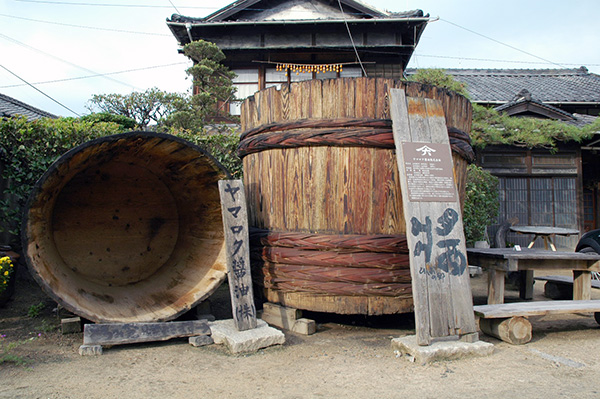
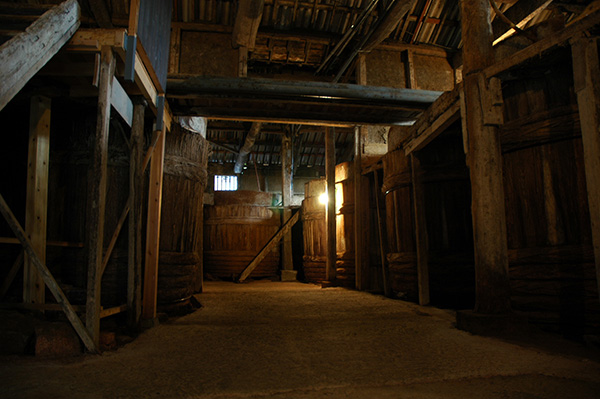
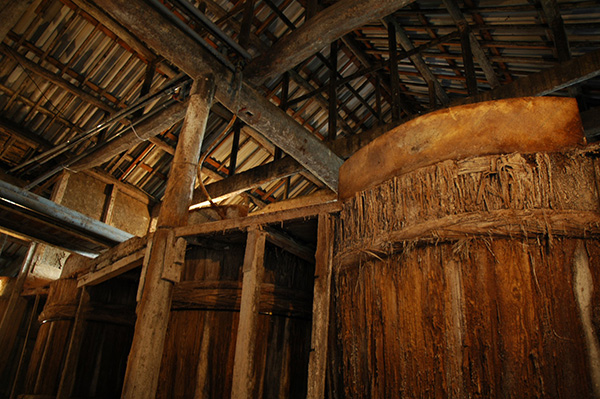
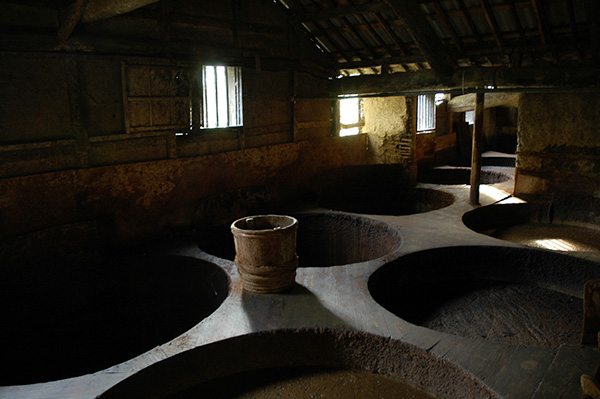
中古ではだめ。新桶じゃないとだめなんです。
「ボクは職人じゃないですよ!蔵の菌たちが職人なんです!」と山本さん。「醤油は人がつくるんじゃない。菌が造るんや。人はその手助けをちょっとするだけだ!」が先代の口癖だったそうで、その考えはしっかりと受け継がれているようです。
木桶にこだわる理由は正にここにあって、その菌たちが木桶でないと住み着くことができないからです。「中古の桶を試したことがあるのですが、前の蔵元の菌が住み着いていて、同じようにはなりませんでした・・・」
だから、新桶じゃないとだめなんです。
Pointless to use plastic tanks and secondhand kioke
“I am not a brewer or craftsman. The bacteria in the brewery are the real craftsmen,” says Yamamoto, “People do not make soy sauce—they are made by the bacteria. People just only give the bacteria a little help!” This ideology of brewing was passed down from the previous generation, and it continues to be passed down through the generations.
The reason for sticking to kioke after all this time is because the bacteria cannot settle in anything else except for wood. Yamamoto experimented with a pre−owned barrel, but met with defeat: “I’ve tried to use a secondhand barrel, but the bacteria from the previous brewery was so deeply embedded that the taste was not the same,” said Yamamoto.
Therefore, new kioke are essential for preserving the kioke legacy.
2009年10月24日 新桶7本が到着
ただ、これは醤油業界に携わっている人なら「えっ!?」と思うことなのです。今の時代に桶からプラスチックタンクに替えたという話は聞いても、新桶を入れることは非常に珍しいことです。桶職人の上芝さんは「そうそうあることじゃあない!それも7本同時にだからね。」と言います。
この桶は百年以上使われます。つまり、山本さんの孫の代まで使い続けられる予定なのですが、「自分が今、使っている桶は何代も前の先祖が残してくれたもの。孫の代に桶仕込みの醤油を残すために逆算をしていくと、このタイミングで新桶を入れておかないといけなかったのです。」
October 24, 2009: Nine new barrels arrive
Nowadays, soy sauce breweries would replace their old wooden kioke for plastic tanks because they were cheaper and easier to maintain. But when Yamamoto ordered new kioke, it was extremely unusual, and many people in the soy sauce industry said, “He’s doing what?!” Ueshiba, a skilled kioke craftsman who made the barrels, jokingly replied back, “It is very unusual. He’s even asking for nine barrels all at once.”
Although the new barrels suffice today’s soy sauce production, Yamamoto still felt a sense of uneasiness. The kioke in the brewery have been used for over a hundred years, and Yamamoto is unsure how much time is left for these barrels. He expresses his thoughts, “I am currently using the kioke that my ancestors passed down to me. After calculating backwards, I need to put new kioke now for my grandchildren’s generation.”

2012年2月 桶修行のために大阪へ
ただ、次なる課題が出てきました。桶は百年近く使うことができるのですが、箍(たが)がはずれたり、醤油が漏れてしまった等、修繕が必要になる場合があります。さらには、この桶が使えなくなる百年後はどうするのか・・・という問題です。
国内で醤油を仕込むような大桶を組めるのは大阪の堺にある藤井製桶所しかありません。数十年先も頼れる保証がないのであれば、自分たちで技術を習得しておくしかない。そう考えて地元の大工さんと共に桶修行にでかけたのです。
February 2012: Kioke apprenticeship in Osaka
However, after thinking about the problem for future generations, new challenges presented itself. Although the kioke can be used for 100 years, repairs may be necessary. How does one repair the bamboo hoop bindings? Or what should one do if leaks occurred? What’s more, what will a person do when the kioke becomes unusable after 100 years?
In all of Japan, Fujii Kioke Factory is the only business that constructs these barrels. There is no guarantee that you can rely on future generations, so the only thing you would have to do is master the skills yourself. With that in mind, Yamamoto set out for Sakai, Osaka to undertake an apprenticeship.


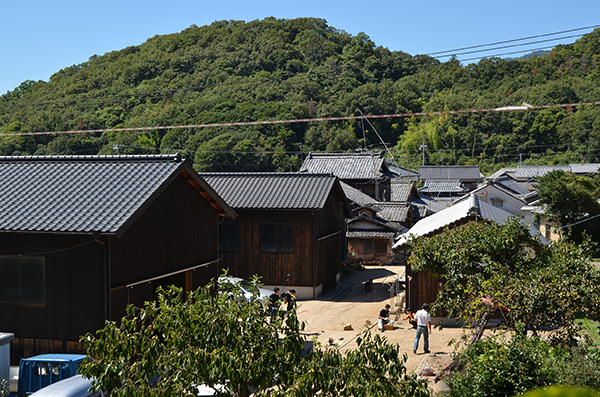
2013年9月 いよいよ自分たちだけで桶づくり
桶づくりに使う道具は特殊なものが多く、板材の切断の仕方や箍に使う竹の調達など一つ一つ準備を進めて2013年9月に自分たちだけでの桶づくりにたどり着きました。
作業開始直後からトラブル続き。「やっぱり無理なんじゃないか?!」と何度も思う場面がありましたが、4日かけてようやく完成。後日、出来栄えを確認しに来た師匠からも、「上出来だ!」と太鼓判を押され一同ほっと胸をなでおろしました。
September 2013: “Finally, we made our own barrel”
The procedure to build a barrel is laborious. Special tools needed to make the barrels, how to cut the cedar trees into planks, harvesting and collecting bamboo for the hoop bindings…the list almost seems endless.
Problems and complications arose right after the kioke construction began. Yamamoto often thought, “Is this even possible?” But after four days of intense labor, Yamamoto and his team finally completed their very own kioke on September 2013. Later, the master from Fujii Kioke Factory came to inspect the kioke. When the master said, “Great work!” Yamamoto let out a sigh of relief.



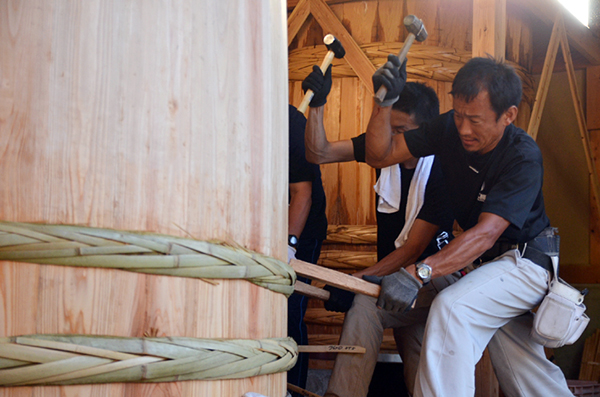
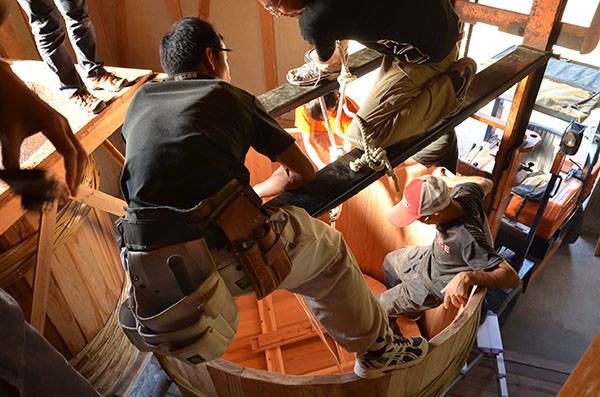
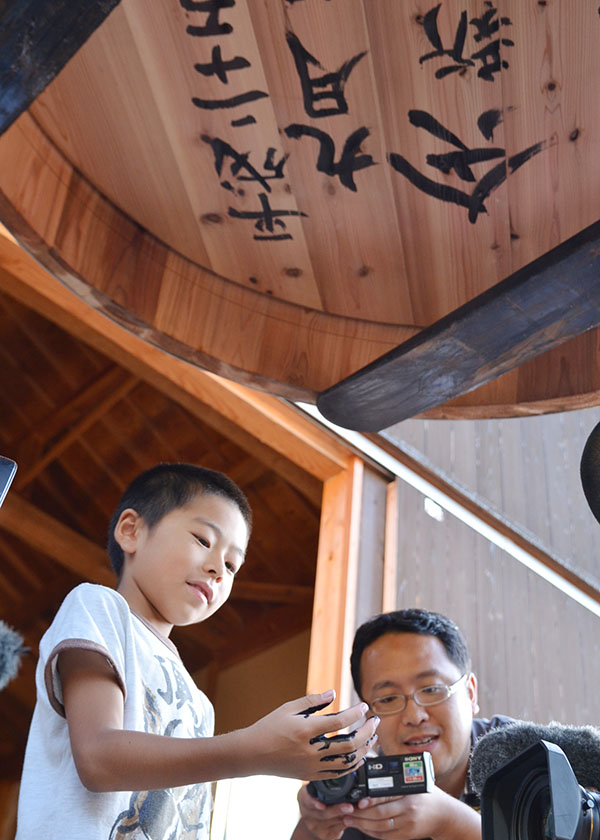

長男が醤油屋、次男が桶屋になってくれたらいいなぁ
新桶をフォークリフトで持ち上げて、底の裏の部分に「新桶一号」の文字を書き入れました。その横には将来のヤマロク醤油六代目(予定)の康蔵くんの手形も。
「孫の代に木桶仕込み醤油を残したい。」その想いで今できること、すべきことに挑戦しているヤマロク醤油。山本家の子供たちにとっては醤油屋という職業はカッコいいものとして映っているにちがいありません。
My eldest son is the brewery owner; and I hope my second son is the kioke store owner
At the bottom of the new kioke, Yamamoto wrote, “Kioke No. 1, Yamaroku Soy Sauce 6th Generation” (planned). Next to these words, Kozo-kun wrote his own name with his handprint underneath.
“I want to pass down kioke and traditional brewing methods for my grandchildren’s generation,” said Yamamoto. With that in mind, Yamaroku Soy Sauce Brewery may face obstacles in the future. But, the children in the Yamamoto family find the traditional soy sauce industry to be cool and exciting, so they are ready to take on any challenges.
残すだけでない伝統継承のあるべき姿
昔ながらをそのまま踏襲するのではなく、攻めの伝統継承をしている印象を受けます。昔からこうだからではなく、なぜこの手法なのかという根拠とともに説明できる蔵人はなかなかいません。常に新しいチャレンジをしつつも、木桶による仕込みで最大限に美味しい醤油をつくるという目的は決してブラさない姿勢があります。
It shouldn’t just be to preserve traditions
Instead of just following old traditions, Yamamoto has the impression of inheriting this traditional industry. However, inheriting this tradition is difficult. It’s not because this happened long ago, but rather, there are very few existing breweries that can explain this technique. However, always facing a new challenge head-on, nothing will stand in the way of Yamamoto making as much delicious soy sauce as possible in the kioke.
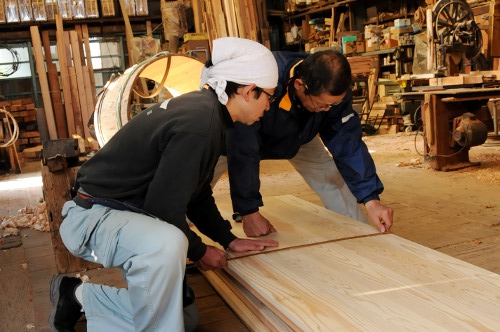

島を出るのは一年で数日だけ
山本さんとメールのやり取りをしていると、送られてくるのは早朝か深夜がほとんどです。日中は見学者の対応と醤油づくりに最大限の時間を費やすスタンスはずっと変わることがありません。
「ちょっと仕込みの方法を変えてみたんです。」という話題によくなります。醤油の成分を分析して数値で捉えることと、醤油の見た目や香りや感触との両面から常に捉えていて、「原理からするとこうした方がより良いはず。」と小さな改善を積み重ねています。
醤油の場合は仕込んでから搾れるまで数年かかるので、試行錯誤の結果が出るまで時間を要します。そのため毎年同じ作業の繰り返しになりがちです。ただ、山本さんの場合はいつ会っても常に進化している感覚を覚えるのです。
He leaves the island for only a few days a year
When exchanging emails with Yamamoto, I noticed that they were always sent out early in the morning or in the middle of the night. During the day, he spends all of his time and energy interacting with visitors and making soy sauce. Because he is so passionate with what he is doing, I personally don’t think this lifestyle will change anytime soon.
Simply put, Yamamoto says that he tried changing his methods a little bit. As he analyzes his soy sauce’s ingredients and takes measurements, he also takes into consideration its appearance, smell, and texture. “Rationally, it seems to be the best way,” he says, as he continues to make improvements little by little.
In the case of traditionally−brewed soy sauce, it takes several years before you can press and refine it. Clearly, it will take time to get the results from trial and error processes. Therefore, many brewers tend to repeat the same work every year. However, in the case of Yamamoto, he always finds creative ways to change his recipe. I always feel a sense of evolution in him and his products every time we meet.
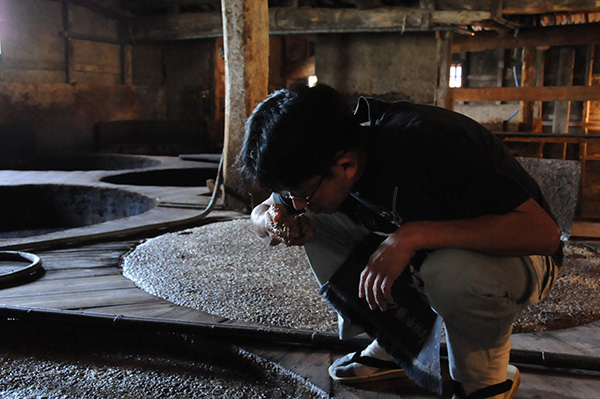



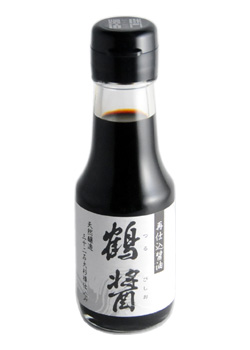
小豆島観光に欠かせない醤油蔵
価格 : 428円+税
原材料 : 大豆、小麦、食塩

黒大豆原料であっさりとキレが共存
TEL:0879-82-0666 FAX:0879-82-1293
http://yama-roku.net/

